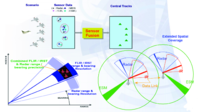
Photo from wikipedia
In underwater acoustic communication, there has been a lot of interest in detection and acquisition of information about multiple sensors as well as detection of information on a single sensor.… Click to show full abstract
In underwater acoustic communication, there has been a lot of interest in detection and acquisition of information about multiple sensors as well as detection of information on a single sensor. However, research on multiple sensors access is lacking. In order to acquire information from each sensor in multiple sensors access underwater communication, we mainly use the spreading method which can obtain information of each sensor individually at the receiving side by multiplying the code with different orthogonal components in the same frequency band. In the case of multiple sensors, successive interference cancellation is used to remove interference from other sensor and apply the RAKE method. However, in a multiple sensor communication environment, if the channel information is not perfect, the performance is reduced. In this paper, we propose a transceiver structure for multiple sensor covert acoustic communication using the spread spectrum method and RAKE method, and propose and effective receiver structure to overcome drawbacks. An actual underwater experiment was conducted to analyze the performance of the covert underwater acoustic communication. The result of experiment indicated that the transmission and receive structure proposed through the actual underwater experiment was well-suited to the communication model for covert multiple accesses. In underwater acoustic communication, there has been a lot of interest in detection and acquisition of information about multiple sensors as well as detection of information on a single sensor. However, research on multiple sensors access is lacking. In order to acquire information from each sensor in multiple sensors access underwater communication, we mainly use the spreading method which can obtain information of each sensor individually at the receiving side by multiplying the code with different orthogonal components in the same frequency band. In the case of multiple sensors, successive interference cancellation is used to remove interference from other sensor and apply the RAKE method. However, in a multiple sensor communication environment, if the channel information is not perfect, the performance is reduced. In this paper, we propose a transceiver structure for multiple sensor covert acoustic communication using the spread spectrum method and RAKE method, and propose and effective receiver struc...
Journal Title: Journal of the Acoustical Society of America
Year Published: 2018
Link to full text (if available)
Share on Social Media: Sign Up to like & get
recommendations!